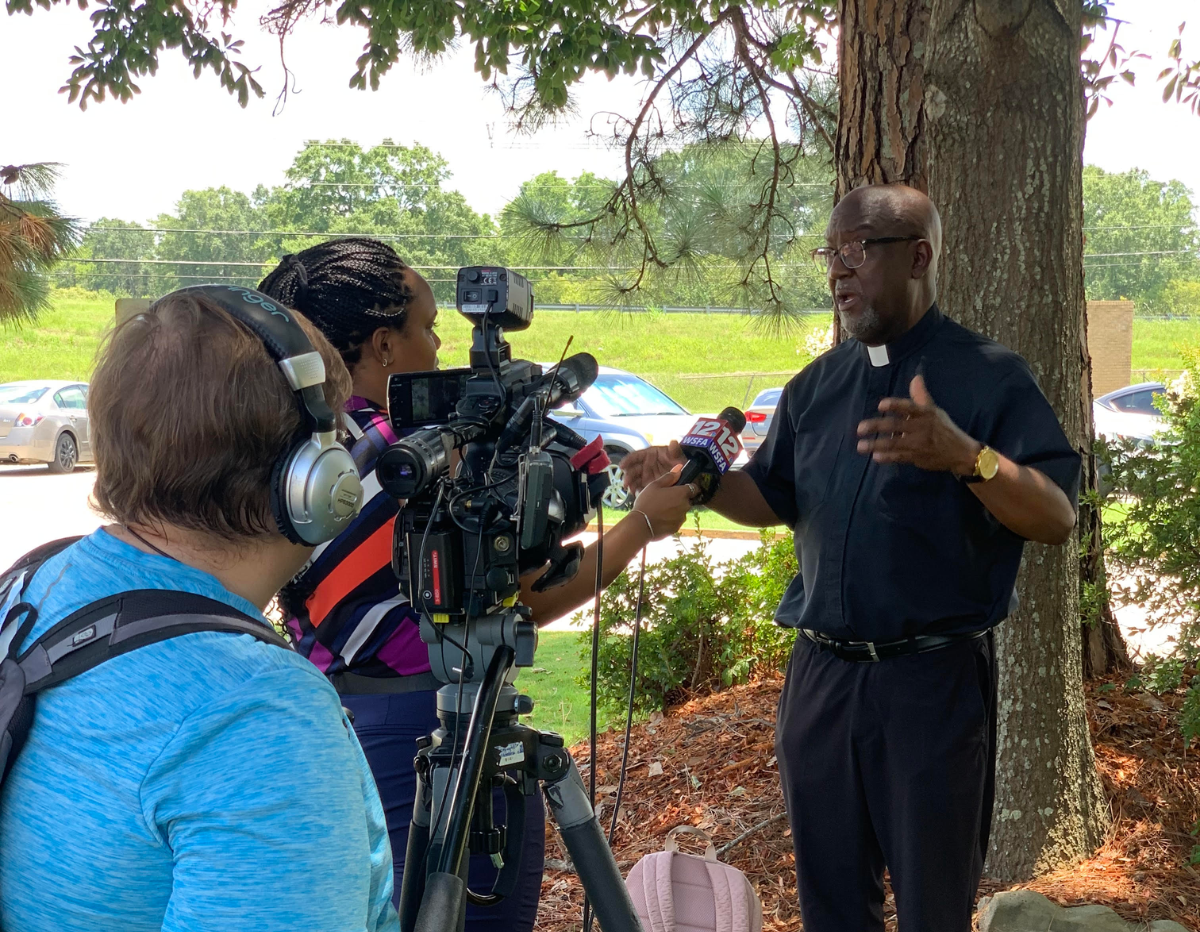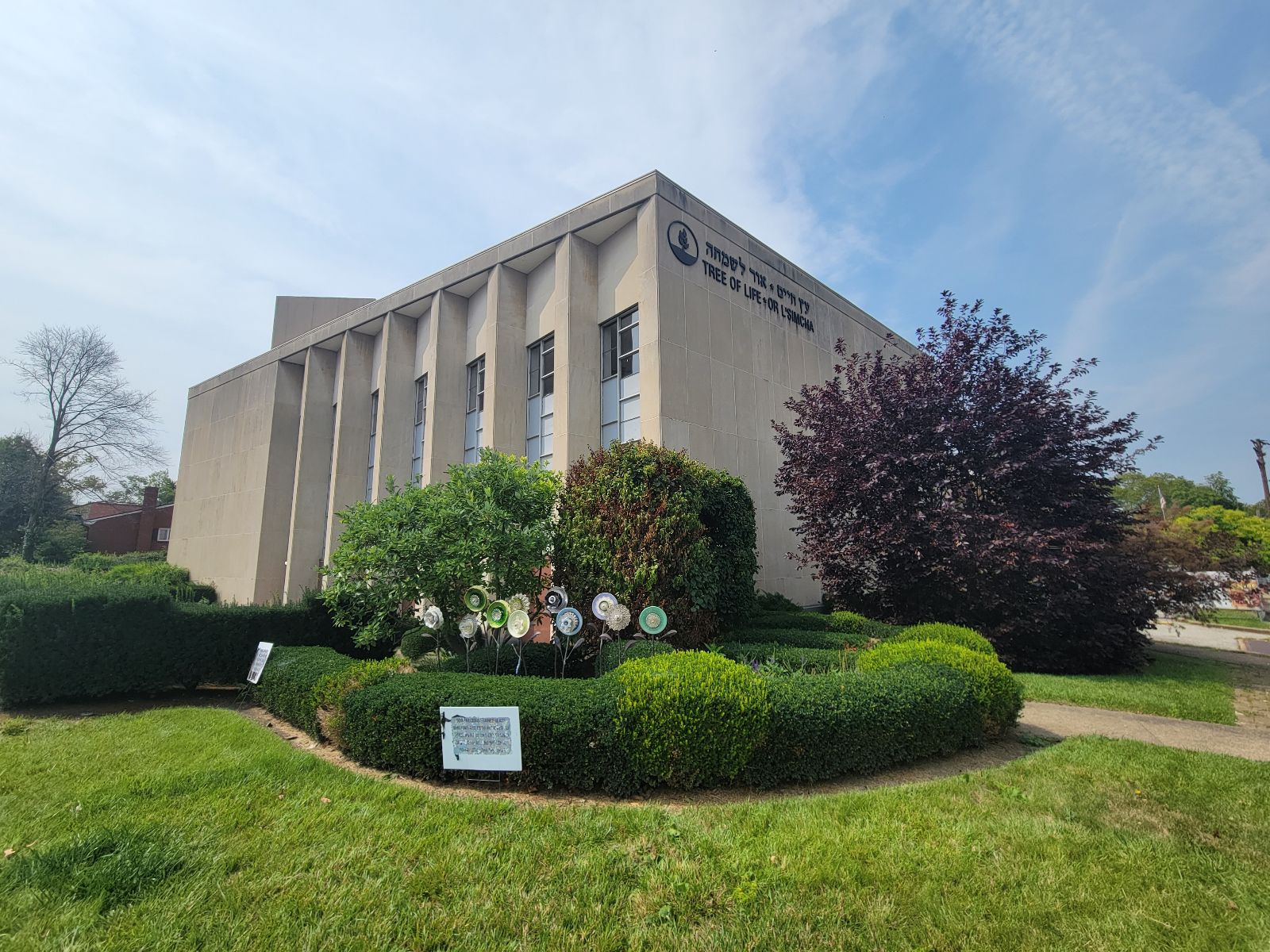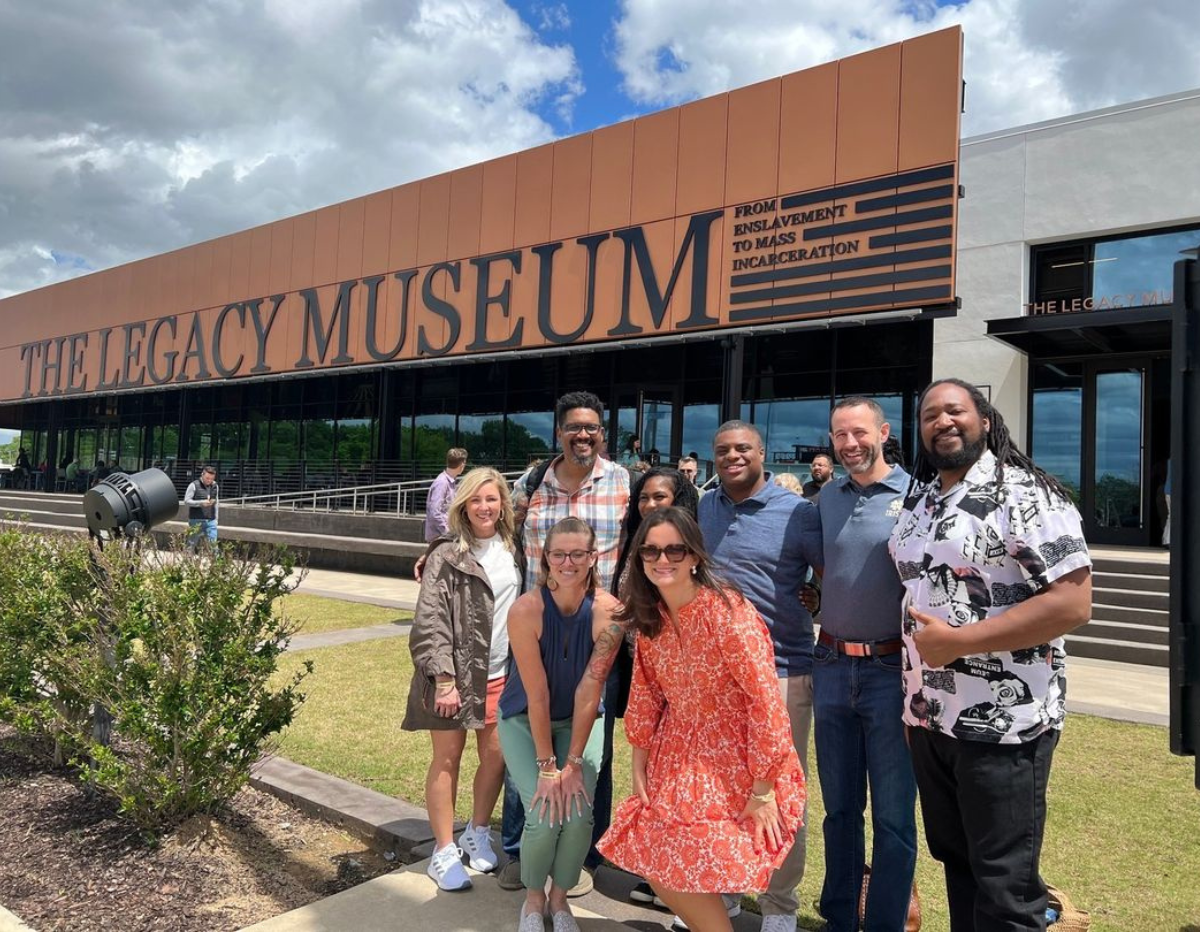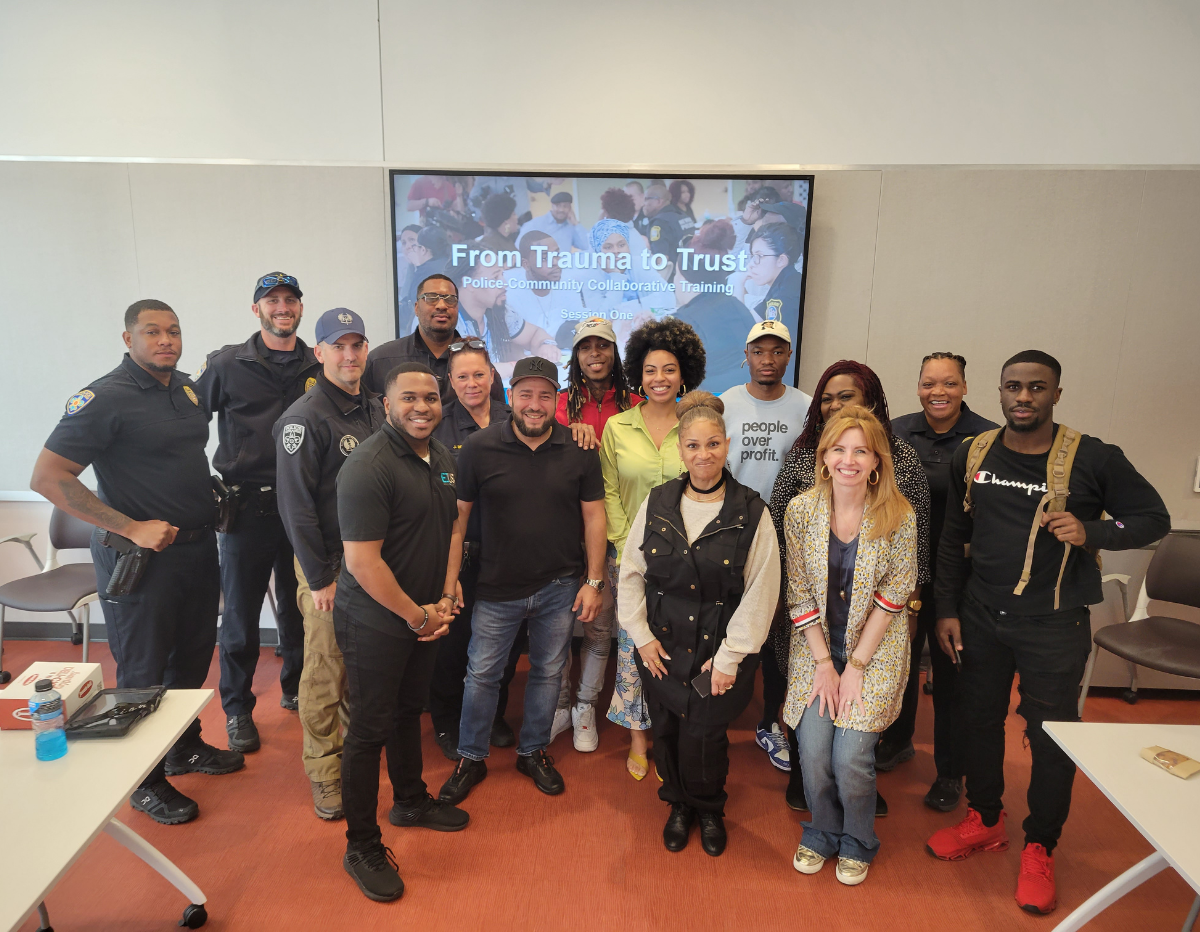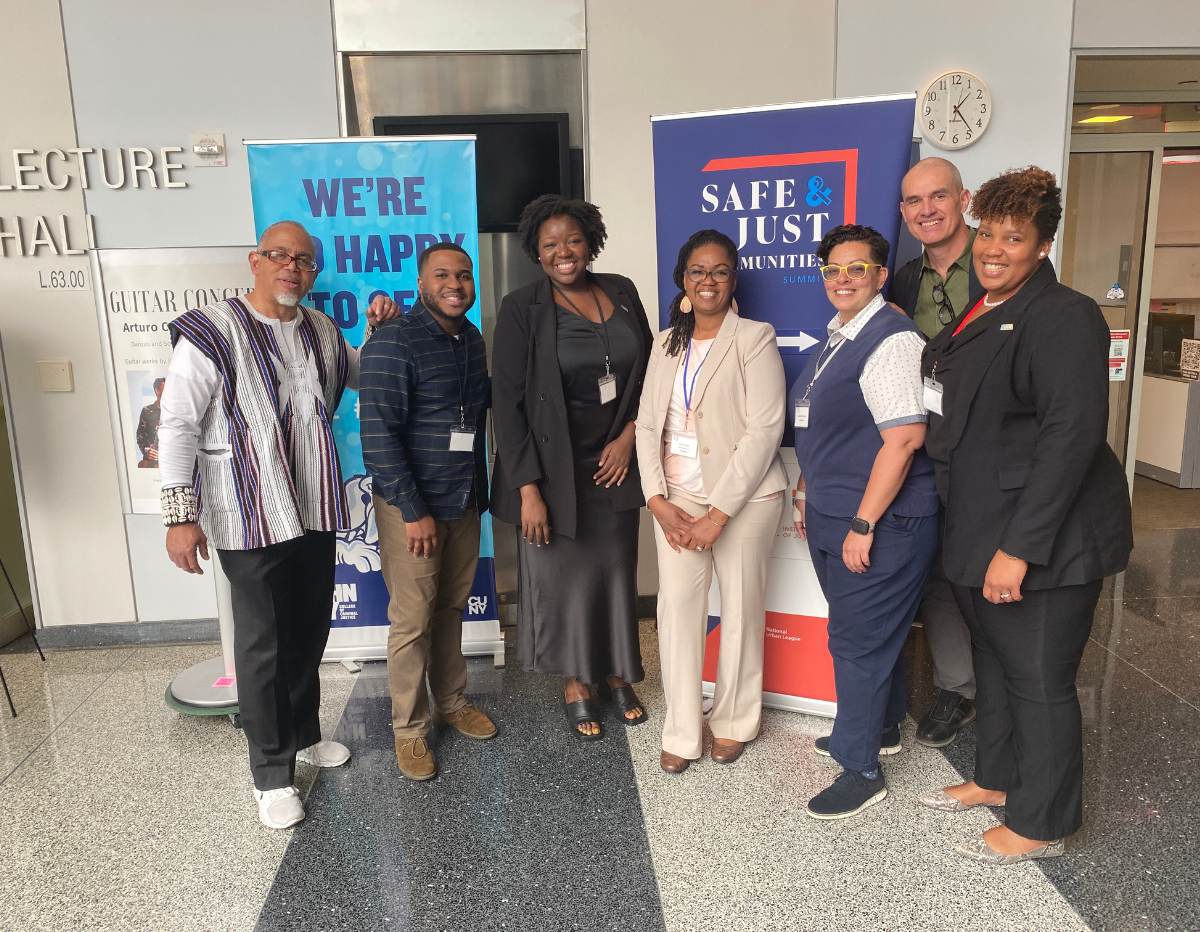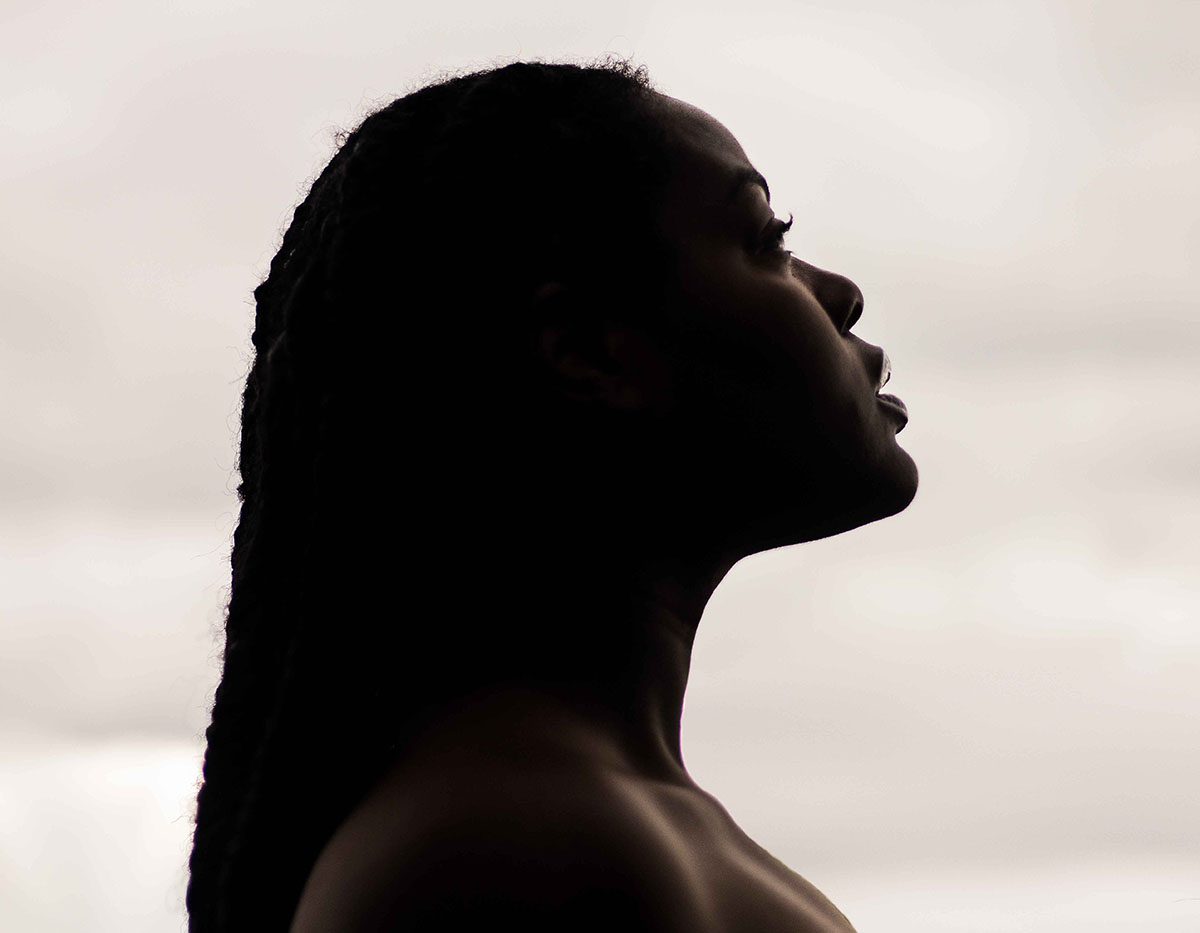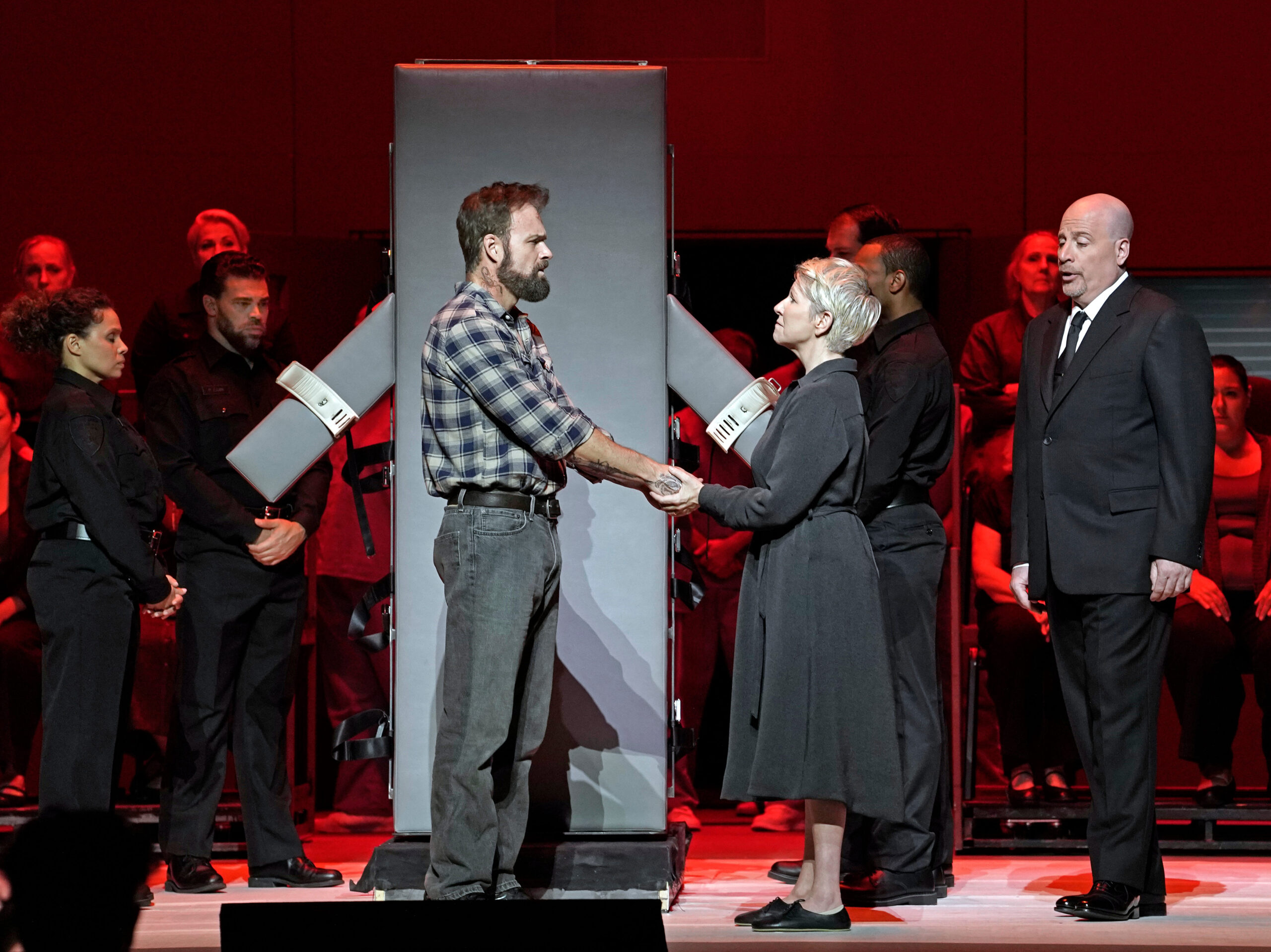
Earlier this year, international opera singer Ryan McKinny emailed EJUSA out of the blue. He told us that he was performing the role of Joseph De Rocher in a new production of “Dead Man Walking” at The Metropolitan Opera. He wanted to use his platform, the biggest of his career to date, to elevate our work, not just about the death penalty but our focus around the healing of trauma.
Ryan isn’t new to social justice. He has worked with Search for Common Ground, an incredible global peacebuilding organization, for years. And he did much outreach the first time in the role, in 2019, in Chicago. But he had new motivation in elevating the harms of our criminal justice system and the need for healing. Years ago, he had befriended Terence Andrus. When they met, Terence was on death row in Texas, long after he struggled through a traumatic and difficult childhood. Earlier this year, after learning he no longer had any appeal options, Terence committed suicide.
Ryan felt especially motivated to tell Terence’s story and to advocate for a system that could heal and build safety, dignity, empathy, and well-being. We are grateful that he felt this call.
EJUSA: When did you learn you were going to play Joe in Dead Man Walking?
Ryan: I found out in the fall of 2020. The Met production had been postponed, and fortunately for me, the person originally in the role couldn’t do it anymore.
EJUSA: So Terence was still alive when you had gotten the role?
Ryan: He was. We didn’t talk about it much then, but we had talked about the opera [and our relationship] more when I first sang the role in 2019. He made a big point of “We’re friends, and I’m happy for you to talk about us. If you talk about me, my only ask is that you talk about me as a person and not just my case.”
He was an amazing poet and a visual artist, and a really funny, thoughtful guy. It’s easy to talk about him. Talking to him made it so clear that he and I, in many ways, had we been born in opposite places—I could have been ended up like him very easily. I had a lot of troubles as a teenager, but I had a lot of support in ways that he didn’t. But we had similar interests in the way we thought about things. He had a daughter my daughter’s age, and they both played violin. It was interesting to talk to him and realize we were on these parallel but very different tracks.
I’ve always thought that a lot of who we are as people really is about what we come from. If your experience as a young person doesn’t have a lot of opportunity for growth or support, that’s what shapes people who end up incarcerated. And people who haven’t had that experience can have a hard time understanding that.

Ryan McKinny as Joseph De Rocher and Joyce DiDonato as Sister Helen Prejean in Jake Heggie’s “Dead Man Walking.” Photo: Karen Almond / Met Opera
EJUSA: Was there a moment after Terence’s death where you realized you wanted to elevate your activism around the issue?
Ryan: Outside of being profoundly sad and missing my friend, I realized quickly that the experience of him dying was going to be a big part of my experience doing this piece. I’ve always connected him with this piece anyway. It became important to me not to just tell the story, but to connect that to folks actively doing things like EJUSA. Often in the arts, especially in the classical arts, we have a tendency to tell stories that make us feel big emotions but it can feel disconnected from the real world. And this opera is centered around a real story and an issue that is still happening. Not just the death penalty but cycles of violence in our country.
This is the biggest platform I’ve ever had. I wanted to make sure I was pointing people so that when they have these big feelings, here’s a way that you can connect them to action and not just move on with your day. Instead, they ask who are the people making changes here in ways that already have a history of success, that are really moving the dial. That led me to EJUSA, and as soon as I read the mission statement, I knew this is exactly who I want to be aligned with. I think EJUSA really fits with my own philosophy about how change really happens.
EJUSA: How does performing this piece today versus four years ago feel different, especially given what happened with the uprisings of 2020 around George Floyd’s murder?
Ryan: When you’re doing something as high profile as this, you can feel very narrow about focusing on a good performance. But this piece is different. This cast has been engaged with this piece for a while and everyone feels this responsibility to tell this story not just because it’s good music but because the themes are important. I feel like I’m telling Terence’s story but also telling a story about how we don’t see each other as human beings but that we can. Forgiveness is possible. There are ways I’ve tried to weave those together. So in the show, they give my characters a lot of fake tattoos. And I asked them for a black rose because my favorite of Terence’s poems is called “The Black Rose.” It’s on my hand, and it’s a very physical feeling of carrying him through this piece.
I certainly feel a responsibility to open people’s eyes and hearts to a bigger story that’s going on in our country, everywhere. I feel a lot of responsibility to help people understand the reality of the systemic tragedy of the justice system and the death penalty, but also the real humanity of these people. They’re not numbers, they’re not others. These people could be us.
